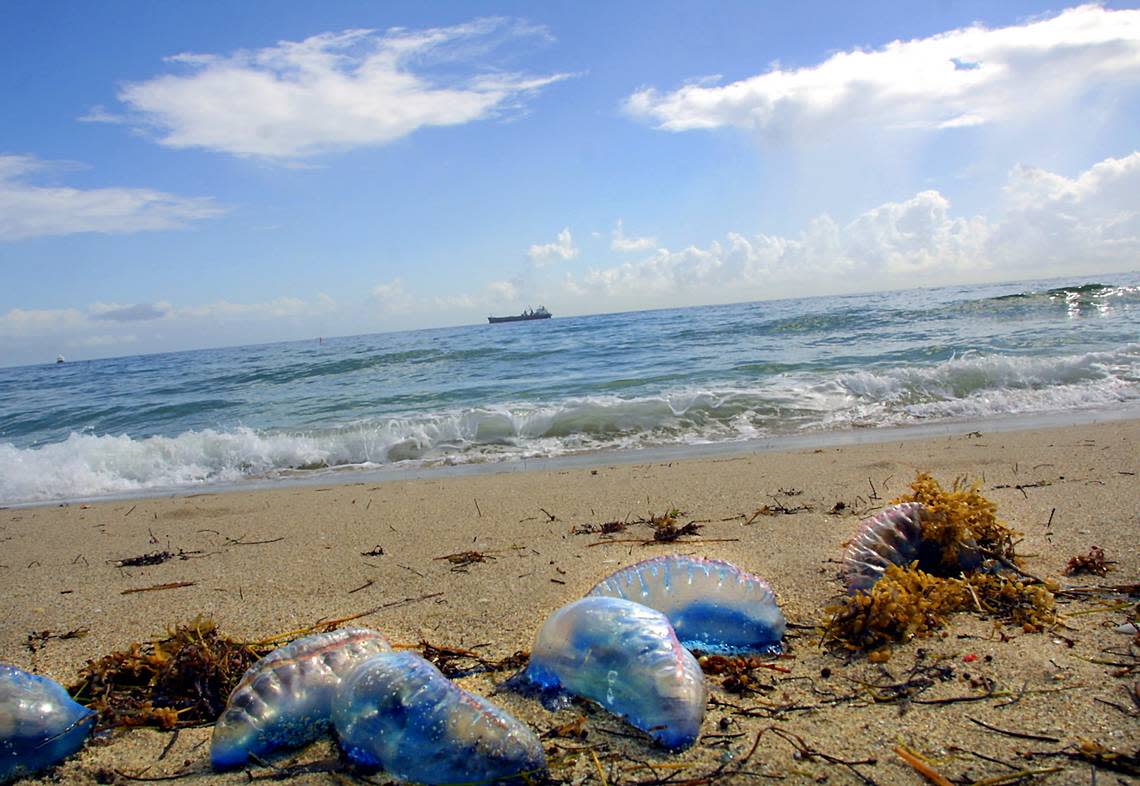Men-of-war are on South Florida beaches. What you need to know to avoid the sting
Men-of-war are familiar unwanted visitors on shores along Florida beaches in the spring. But recent strong breezes have swept these potentially painful pests our way. Several Florida municipalities have warned of an influx of Portuguese men-of-war on the beaches.
Often mistaken for jellyfish because of their jelly-like appearance, the man-of-war is a species of siphonophore whose distinctive blue gas-filled bubble that floats above the water looks like 18th century Portuguese warships’ sails, according to the National Ocean Service.
But it’s the tentacles dangling below the blue bubble that sting when they come into contact with your skin. Even when the creatures lie dead on the beach, those tangled tentacles splayed on the sand for up to 100 feet have enough active venom to sting.
The sea creatures don’t swim but are pushed along by wind and ocean currents. Given recent breezy conditions along South Florida’s coastal beaches these men-of-war have been propelled onto shorelines.
“They were huge, coming in like battleships! Long tentacles that sting and hurt,” said WPTV meteorologist James Wieland in a tweet Friday about Palm Beach County beaches.
Breezy southeast winds have brought in lots of man-o-war at the beaches.Managed to dodge them while I was out there but they were huge,coming in like battleships! Long tentacles that sting and hurt A LOT! Beware #florida #flwx #beach #manowar #southfl #soflo #winter #flsurf pic.twitter.com/by7B0utMIN
— James Wieland ♂️ (@SurfnWeatherman) February 10, 2023
The Village of Key Biscayne also posted a man-of-war warning to its beach goers this weekend.
“Keep a safe distance from these marine creatures, which can deliver extremely painful stings. If you are swimming, remember to be mindful that they are near as man-of-war tentacles can be long and thin, sticky, and very hard to see,” Key Biscayne officials posted.
Vinegar is the recommended remedy should you come into contact with the tentacles. Do not attempt to whisk away the tentacles with freshwater, ice, rubbing alcohol and urine — people have recommended peeing on the affected skin to wash off the stingers. Those measures may only spur the release of more venom into the skin.
READ MORE: Men o’ war are on South Florida beaches. What you need to know about treating the sting

Cold ‘we haven’t felt in some time’ is coming to South Florida. Here’s a timeline
